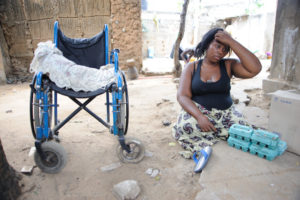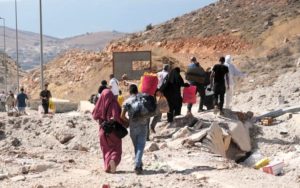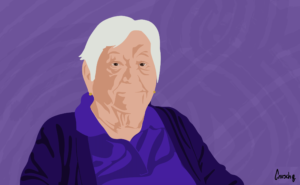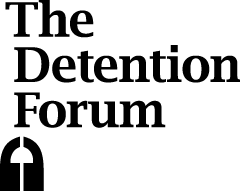Myanmar’s Rohingya population has been subjected to extreme forms of inhumanity since the country gained independence more than six decades ago. This article examines their current plight and explains why their situation seems unlikely to improve in the near future.
The historical context
Rohingya are a Muslim minority group whose presence in the Rakhine State of Myanmar dates back to at least the twelfth century. Their number expanded significantly as a result of labour migration from Bengal, both in the pre-colonial period and under British rule. Violence broke out between the Rohingya and Rakhine’s majority Buddhist population following the Japanese invasion of Myanmar in 1942, and persisted once the country gained independence six years later.
While Myanmar’s new Constitution and Citizenship Act did not explicitly render them stateless, the Rohingya were excluded from a list of officially recognised ethnic groups. National Registration Cards issued to the Rohingya by the military government which assumed power in 1962, stated that “holding this certificate shall not be considered as conclusive proof of citizenship.”
New restrictions imposed on the Rohingya in 1974 and in successive years reinforced their economic, social and political marginalization. They were subjected to strict controls on their freedom of movement, their ability to marry, have children and establish livelihoods, and had limited access to health, education and other public services, They were also obliged to undertake forced labour for the state, which was tightly controlled by the country’s predominant population, the Buddhist Burmans. As a result of periodic assaults by Myanmar’s armed forces, locally known as the Tatmadaw, the Rohingya were displaced and forcibly relocated in large numbers, both within and beyond the borders of the country.
Recent developments
Many external commentators were hopeful that the situation of the Rohingya, and the condition of the country as a whole, might improve to some extent when, in 2015, the military gave way to an elected civilian government under the de facto leadership of Nobel Peace Prize winner Aung San Suu Kyi. But little progress was made in these respects. Ms Suu Kyi herself hailed from an eminent Burman military family and had little sympathy for the Rohingya, a name that she has always refused to use. She also had little room for manoeuvre, given the continued dominance of the army in many of Myanmar’s power structures.
The inability and unwillingness of Suu Kyi’s government to address the plight of the Rohingya was vividly demonstrated in August 2017, when a brutal offensive launched by the Tatmadaw (Myanmar’s army) prompted the rapid exodus of up to 800,000 Rohingya to neighbouring Bangladesh.
Four years later, Suu Kyi and her administration were removed from power when a military junta staged a coup and imposed martial law on the country. Since that time, much of Myanmar, including Rakhine State, has been in a state of severe turmoil, with numerous armed opposition groups fighting against the new government.
Myanmar’s Rohingya population can now be divided into three broad categories: those remaining in the country, those who have fled to Bangladesh; and those who have moved to other parts of Asia. The following sections examine the current situation of these different groups.
Myanmar
In 2012, Tatmadaw soldiers and groups of armed Rakhine villagers attacked and set fire to large numbers of Rohingya settlements, forcing large numbers to abandon their homes. Around 140,000 of them were rounded up and forced into internment camps, to which they have been confined ever since. Those living in the camps now constitute around a fifth of the 700,000 Rohingya who are estimated to remain in Myanmar.
Conditions in the camps are dire. They are overcrowded, with the Rohingya obliged to live in ramshackle wooden huts that have been damaged by monsoons and floods. While small-scale businesses are allowed to operate in the camps, the Rohingya residents rely upon international aid organizations for their food and other basic needs. According to one of those agencies, access to healthcare in the camps is restricted, with medical staff visiting for short periods of time and on an infrequent basis. Rates of disease and child mortality are consequently considerably higher in the camps than elsewhere in Rakhine State.
According to a recent Economist article, medical referrals from the camps to the local hospital “are granted only for emergencies and even then, getting the necessary travel authorization can take days.” Those who can leave the camps must get a ‘village departure certificate’ which has to be paid for. More generally, Myanmar’s security forces demand that people travelling in Rakhine State present an identity card proving their citizenship, which most Rohingyas lack. “All Rohingyas must pass through numerous checkpoints manned by soldiers who demand bribes.”
Conditions are not substantially better for those Rohingyas who remain in Myanmar but live outside of the camps. They also have serious restrictions placed on their freedom of movement and their right of assembly.
In recent years, moreover, and especially since the 2021 coup, Rakhine State has been the scene of an increasingly intense armed conflict, with the Tatmadaw using indiscriminate violence to counter the activities of the separatist and Buddhist Arakan Army. whose political wing has of late expressed growing support for the Rohingya. Large numbers of Rakhine State residents continue to be displaced as a result of this conflict.
Bangladesh
In the mid-1970s and again in the early 1990s, the Myanmar military launched savage attacks on the Rohingya population, prompting hundreds of thousands to flee to Bangladesh. On both occasions, they were induced to return by the Bangladesh authorities and security services, which used a variety of coercive tactics to ensure the speedy departure of the Rohingya refugees. Shamefully, the United Nations actively supported these involuntary repatriation movements.
As stated earlier in this article, a third wave of Rohingya expulsions to Bangladesh took place in 2017, when another armed onslaught by the Tatmadaw led to the exodus of more than 700,000 Rohingya in the space of a few short weeks. Bangladesh has received considerable international praise for its readiness to accommodate such a large number of new arrivals from Myanmar. But there are growing concerns that the Dhaka government is resorting to its earlier intimidatory measures in an attempt to rid itself of the refugees, which it claims to be a serious threat to its economy, environment and security.
When the Rohingya arrived in Bangladesh in 2017, they were able to exercise some freedom of movement, enabling some of them to access the local labour market and to gain a modest income. Today, however, they can only travel outside their camps if they have authorization to do so. Those camps have now been surrounded with barbed wire, while the shops and schools established by the refugees have been demolished by the Bangladeshi authorities.
The Rohingya camps in Bangladesh have also become increasingly dangerous places in which to live. Fires are a constant hazard, and the refugees are at risk of growing violence from criminal gangs and a militant Rohingya group. Murders, kidnappings, human trafficking and sexual abuse are all prevalent in the camps, as is harassment and intimidation by Bangladeshi security personnel.
In an ostensible attempt to ‘decongest’ the crowded camps, Bangladesh has initiated a controversial relocation programme, transferring refugees from the mainland to the remote island of Bhasan Char in the Bay of Bengal. Some 30,000 refugees have been relocated to the island so far, while plans are in place for a further 70,000 to be moved there.
While UNHCR and other aid agencies are supporting the Bhasan Char operation, serious doubts have been raised as to whether the relocations are truly voluntary in nature and if the island will be able to provide the new arrivals with adequate access to livelihoods and essential services. Human rights organizations have also expressed alarm about the fact that the Rohingya are essentially confined to Bhasan Char, and are subject to arrest if they attempt to leave what some commentators have described as a ‘prison island’. .
According to one hypothesis, Bangladesh is ramping up the relocation of refugees to the bleak surroundings of Bhasan Char in the expectation that it will convince a growing number of Rohingya to return to Myanmar, despite the hardships and violence awaiting them there. To date, however, the refugees have shown no interest at all in repatriation, insisting that they will only go back there if their citizenship is recognized and their rights are respected.
Asia
While the majority of Rohingya refugees are to be found in Bangladesh, smaller numbers have moved further afield in Asia, traveling by land and sea to India, Malaysia, Thailand and Indonesia. As with those who have remained in Myanmar or fled to Bangladesh, the conditions of life for those who have moved to such countries are extremely challenging.
India
India has a longstanding population of Rohingya refugees, which was thought to number between 15,000 and 20,000 until the violent events of 2012 in Rakhine State. Since that time, their number of refugees is estimated to have grown to 40,000, most of whom are to be found in squalid informal settlements in urban centres such as New Delhi, Hyderabad and Jammu.
India is not a signatory to the UN Refugee Convention and does not have a national refugee law. The situation of these refugees has been rendered even more vulnerable in recent years by the anti-Muslim stance of the country’s Hindu nationalist government led by Narendra Modi. There have been repeated calls from some politicians and extremist groups for the Rohingya refugees to be expelled en masse, and some relatively small-scale incidents of eviction, detention and deportation have actually taken place.
While India has recently made it easier for Hindu, Buddhist, Jain and Sikh refugees from neighbouring countries to acquire residence rights and even Indian citizenship, the Rohingya have notably been excluded from this initiative. As is the case in Myanmar itself, they are routinely labeled as ‘Bengalis’ and deemed to be illegal immigrants.
Malaysia,Thailand and Indonesia
According to UNHCR, around 100,000 Rohingya have moved from Myanmar and Bangladesh to Malaysia, taking advantage of the low-wage job opportunities provided by the country’s dynamic economy, especially in the construction and plantation sectors.
While there have been repeated discussions of the need to regularize the status of the Rohingya in Malaysia and to issue them with work permits, the refugees continue to live in a hostile environment. Rohingya boats have been prevented from landing in the country and have been pushed back out to sea. Because they are considered to be illegal immigrants, the Rohingya have been subject to arrest, detention, corporal punishment and deportation. In the workplace, the Rohingya are employed on a casual basis, are vulnerable to exploitation and are expected to undertake the most difficult and dangerous forms of labour.
Concerns over the future of Rohingya and other refugees in Malaysia have grown in recent weeks as the result of an announcement that the government intended to close the UNHCR office in Kuala Lumpur and to assume responsibility for the process of refugee registration and documentation. According to human rights organizations, this would leave the Rohingya even more at risk of deportation and other forms of abuse.
Many of the Rohingya residing in Malaysia arrived there by transiting through Thailand, a country where the security services and human traffickers have conspired to subject the refugees to extreme forms of inhumanity. In the worst of these instances, the Rohingya have found themselves working in slave-like conditions on fishing bloats, incarcerated and abused in remote jungle camps, and have even been discovered in mass graves.
Refused permission to land in Thailand and Malaysia,some Rohingya refugee boats sailing from Myanmar and Bangladesh have continued their southward journey and have been rescued at sea by fishermen from the Indonesian province of Aceh. Defying official plans to push the boats back out to sea, the fishermen have brought the rescued Rohingya to land and ensured that they were provided with food and shelter. In the words of Amnesty International, such incidents represent “a moment of hope and solidarity” in a region where Rohingya refugees encounter so much cruelty.
No solutions in sight
The Rohingya are a population in peril. Prior to 2017, an estimated 1.3 million lived in Myanmar, a figure that has now been halved as a result of departures and deaths. International concern for the future of the Rohingya has mounted, with the US government and a number of international bodies stating that the murderous onslaught conducted by the Tatmadaw in 2017 can legitimately be described as a genocide. And yet there appear to be no solutions in sight for those Rohingya who have survived.
Myanmar is now locked in armed conflict. The ruling junta has lost control of significant parts of the country and conditions in Rakhine State are clearly not amenable to the refugees’ safe repatriation and sustainable reintegration. In their absence from Myanmar, the land formerly farmed by the Rohingya refugees is steadily being appropriated by the military and private sector, making their return an even less likely outcome.
While the Myanmar junta claims to support the establishment of an organized and voluntary repatriation programme for the Rohingya refugees, the historical record suggests that they have little interest in undoing the mass expulsion of 2017. Backed economically by China and militarily by Russia, Myanmar’s military commanders appear impervious to any influence from the western alliance, the United Nations or ASEAN (Association of South-East Asian Nations), a toothless regional body.
While it seems highly unlikely that Rohingya refugees and displaced people will be able to return to their homes in the immediate future, Bangladesh has made it very clear that it expects the Rohingya to leave the country at the earliest possible date. The local integration of the refugees has been definitively ruled out, to the extent that Bangladesh has been reluctant to accept any international support for the refugees and their local hosts beyond that of short-term emergency relief.
A more developmental approach, designed to strengthen the economy and infrastructure in refugee-populated areas of the country, would in the opinion of Dhaka be tantamount to a recognition that the Rohingya refugees are in Bangladesh to stay.
Finally, while resettlement to third countries has been offered to a small number of Rohingya refugees who are at particular risk in Bangladesh, it seems highly unlikely that a significant proportion of the refugee population will be offered this solution. The US resettlement programme is still recovering from the cuts imposed on it by the Trump administration, while the countries of Europe are struggling to cope with the large-scale arrival of Ukrainian refugees and asylum seekers from further afield.
Unless the junta is overthrown and replaced by a democratic and rights-respecting government (which is not an outcome anticipated by most Myanmar experts) the Rohingya who have been displaced beyond and within the country appear destined to live in increasingly difficult and dangerous circumstances.
Dr Jeff Crisp was formerly Head of Policy Development at UNHCR.
Heeba Hasan is studying at University College London.
The content is the authors’ responsibility alone and does not necessarily reflect the views of United Against Inhumanity or any of its members.











